5 Steps to Coordinate Meetings for Operational Efficiency

Overview
The article delineates five essential steps to coordinate meetings for operational efficiency, highlighting the critical role of:
- Appropriate scheduling
- Clear objectives
- Thorough preparation
- Effective follow-up
It begins by addressing the pervasive issue of communication inefficiencies that hinder productivity. Research and statistics substantiate the significance of efficient meeting management, demonstrating its positive impact on productivity and engagement. Proper planning not only mitigates wasted time but also enhances decision-making processes. Each step outlined is supported by compelling data, emphasizing the necessity of adopting these practices to foster a more effective operational environment.
Introduction
In an era where collaboration transcends continents and time zones, the necessity of mastering meeting coordination has reached unprecedented significance. Effective meeting management not only conserves valuable time but also amplifies productivity, guaranteeing that every voice is acknowledged and every agenda item is meticulously addressed. Yet, with studies indicating that unproductive meetings siphon billions from organizations each year, the pressing question arises: how can teams refine their meeting processes to optimize efficiency and engagement? This guide delineates five crucial steps to revolutionize meeting coordination, empowering teams to attain operational excellence.
Set an Appropriate Meeting Time
-
Identify Participants’ Availability: Leverage scheduling tools such as Doodle or Calendly to efficiently gather participants’ availability. These platforms streamline the process of identifying shared availability, ensuring that all attendees can participate without conflicts. Research indicates that 43% of employees spend over three hours each week arranging appointments, highlighting the critical role these tools play in simplifying scheduling.
-
Consider Time Zones: For teams spread across various time zones, it is essential to utilize world clock tools to pinpoint a suitable gathering time for all participants. This consideration is crucial, as nearly one-third of meetings now involve multiple time zones, reflecting a significant increase in remote collaboration. A case study reveals that organizations effectively managing time zone differences can significantly enhance participation rates.
-
Avoid Peak Hours: Schedule discussions outside of peak work hours, such as early mornings or late afternoons. This approach helps participants maintain focus and reduces the likelihood of feeling rushed, as data shows that meetings scheduled during busy periods often result in decreased engagement. In fact, employees spend 31 hours each month on unproductive meetings, underscoring the necessity for effective scheduling practices.
-
Set a Duration: It is vital to establish a reasonable timeframe for meetings. Research suggests that shorter gatherings, typically lasting between 30 to 45 minutes, tend to be more productive than longer sessions. This strategy not only respects participants’ time but also enhances overall session productivity. Notably, a 30-minute meeting with three employees can incur costs ranging from $700 to $1,600, illustrating the financial implications of inefficient gatherings.
-
Send a Calendar Invite: Once the time is confirmed, promptly send a calendar invite to all participants. This confirmation ensures alignment on the gathering details and minimizes the risk of last-minute scheduling conflicts to coordinate the meeting. As David Smith observes, “By acknowledging the cost effects of gatherings, leaders can make more informed choices about when and how to conduct them.
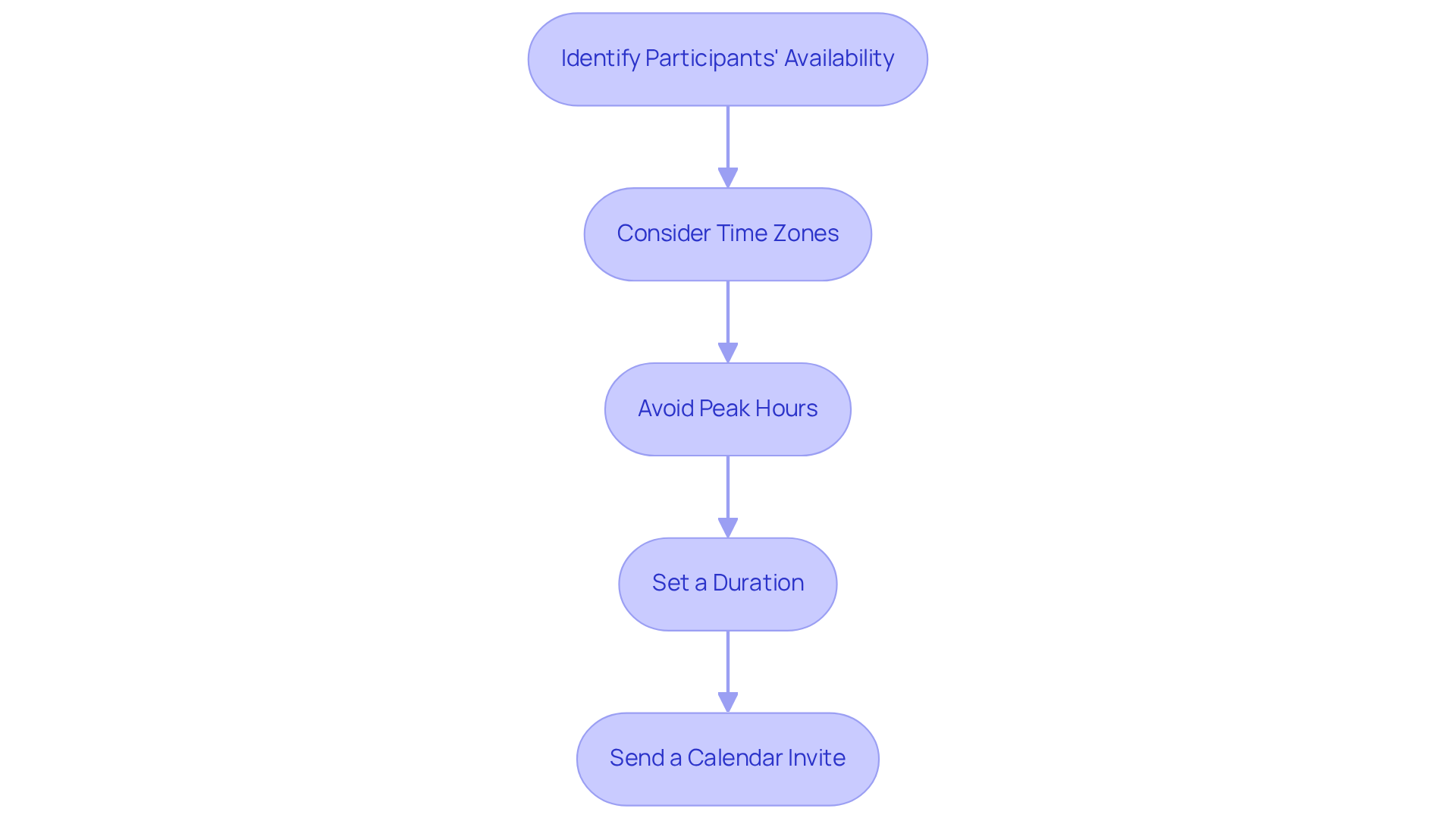
Determine the Meeting Location
-
It is essential to determine whether to coordinate the meeting in-person, virtually, or in a hybrid format, as this decision significantly influences the meeting’s logistics and location.
-
Select a Convenient Venue: For in-person meetings, opt for a venue that is easily accessible for all participants. Consider critical factors such as parking availability, public transport options, and proximity to attendees’ workplaces to ensure maximum attendance.
-
Ensure Adequate Facilities: The selected gathering area must be equipped with essential amenities, including comfortable seating, audio-visual equipment, and reliable internet access. Conduct a thorough check of these facilities beforehand to prevent any technical difficulties during the meeting.
-
Consider Comfort: It is vital to ensure that the venue provides a comfortable environment, featuring adequate lighting and ventilation. A comfortable setting will help maintain participant engagement throughout the session.
-
Coordinate meeting: Clearly communicate the location information in the calendar invite, including any necessary access instructions or links for virtual sessions. This transparency will facilitate smooth attendance and participation.
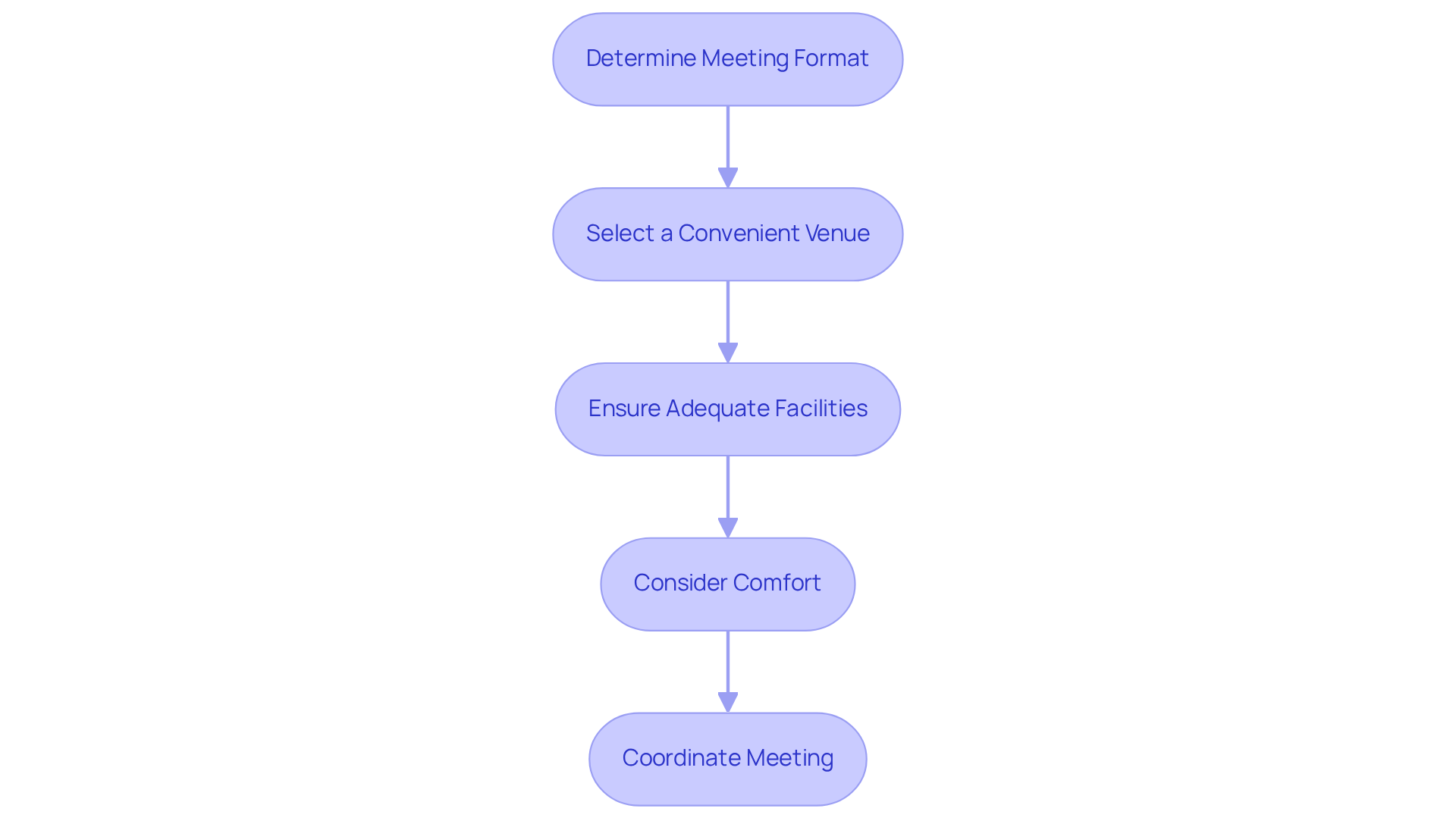
Create Clear Goals for the Meeting
-
Define the Purpose: Clearly articulate the main aim of the gathering. Is it to make a decision, brainstorm ideas, or provide updates? Establishing a clear purpose sets the foundation for a productive discussion.
-
Set Specific Objectives: Break down the main purpose into specific, measurable objectives. For instance, aim to ‘Decide on the marketing strategy for Q1’ or ‘Review project progress and identify roadblocks.’ Studies show that 72% of professionals think having clear objectives is essential for productive gatherings, boosting focus and engagement. Furthermore, with 70% of gatherings deemed unproductive, clear objectives are crucial to address this issue.
-
Share Goals in Advance: Distribute the objectives along with the agenda prior to the gathering. This preparation enables individuals to arrive ready to contribute, fostering a more engaged atmosphere. Organizations that communicate objectives beforehand often report higher levels of participant satisfaction and productivity. Indeed, 64% of workers who operated remotely during the pandemic favor hybrid discussions, emphasizing the significance of clear communication in different formats.
-
Assign Roles: Identify who will lead the discussion on each goal. This guarantees responsibility and maintains the gathering organized. Assigning roles can significantly enhance the effectiveness of gatherings, as it clarifies expectations and responsibilities. David Smith emphasizes that strategic gathering management is crucial for enhancing productivity and decision-making.
-
Review Goals at the Start: Begin the gathering by reviewing the goals to remind participants of the focus and desired outcomes. This practice not only reinforces the session’s objectives but also helps sustain engagement, as 61% of C-suite executives attribute lack of clear goals to unproductive gatherings. Additionally, organizations lose an estimated $28,000 per gathering when attendance exceeds eight individuals, highlighting the financial consequences of efficient session management.
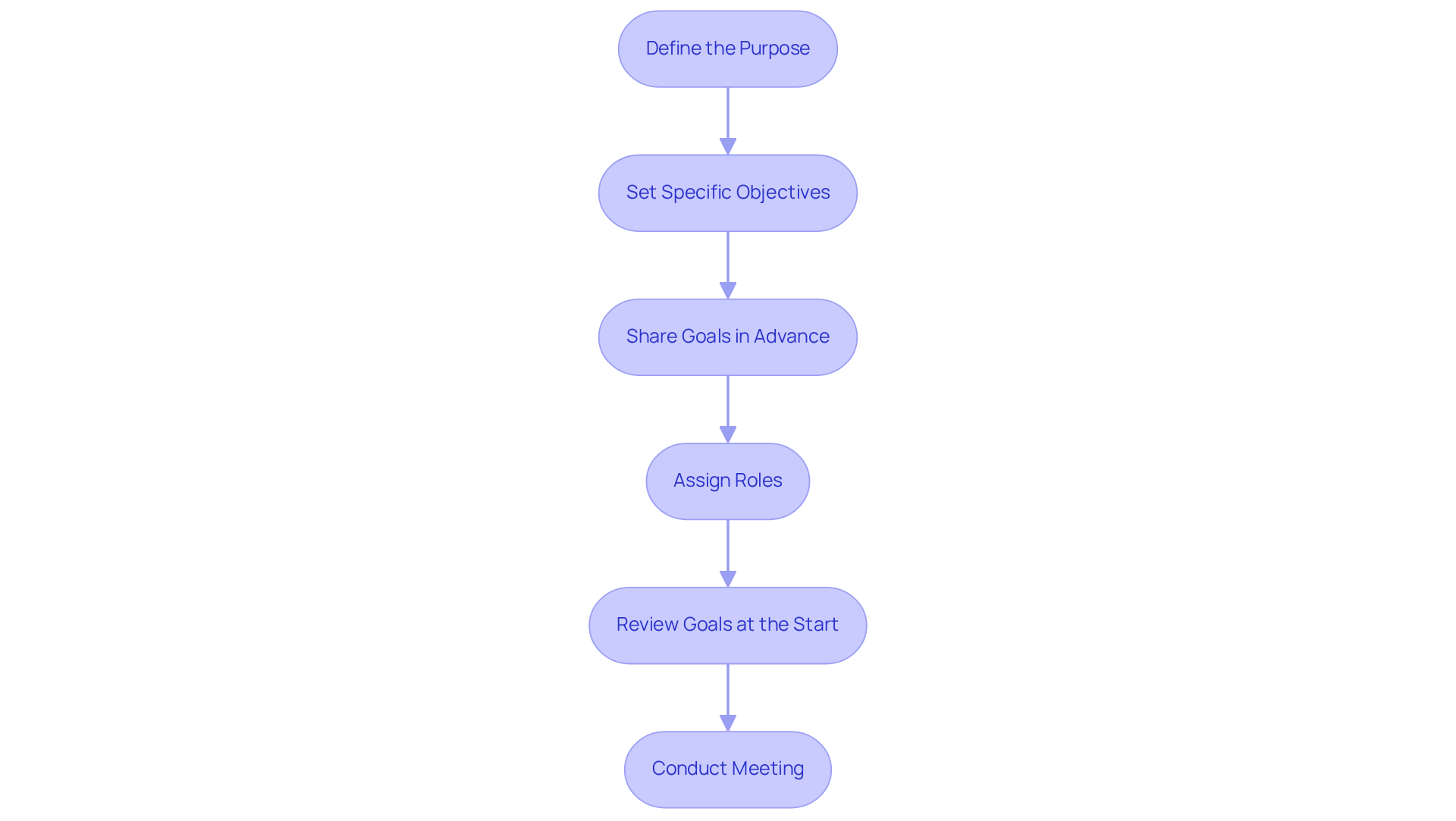
Plan and Prepare for the Meeting
-
To coordinate a meeting, it is crucial to develop a comprehensive agenda. It should clearly outline the topics to be discussed, the time allocated for each, and the designated leader for each topic. A well-organized agenda is essential; statistics reveal that 67% of professionals believe it greatly aids in efficient gatherings, yet only 37% of such events actively utilize an agenda. This disparity highlights a significant gap between belief and action that must be addressed.
-
Gather Necessary Materials: Collecting all relevant documents, presentations, and reports needed for the meeting is imperative. Sharing these materials in advance allows participants to prepare adequately, fostering a more productive discussion. Organizations that prioritize this practice often witness improved engagement and outcomes. Additionally, utilizing session summaries can enhance effectiveness by ensuring that key points are documented.
-
Test Technology: Prior to the gathering, conducting a thorough test of any virtual conferencing tools is essential to ensure seamless operation. This includes checking audio, video, and screen-sharing capabilities. With 72% of employees reporting time loss due to technical issues, as noted by Berenika Teter, ensuring that technology functions properly can prevent disruptions and enhance focus during the meeting.
-
Prepare the Discussion Area: Arriving early to arrange the space is vital for promoting open conversation. Ensuring that seating layouts are conducive to discussion and that all equipment is functional can significantly influence attendee involvement and the overall efficacy of the gathering. A supportive atmosphere is key to maximizing engagement.
-
Encourage Attendee Preparation: Reminding attendees to review the agenda and materials beforehand is essential for fostering meaningful discussions. This preparation allows attendees to coordinate meeting discussions with insights and questions, ultimately leading to more productive outcomes. Considering that unproductive gatherings cost companies over $375 billion each year, adequate preparation cannot be overlooked.
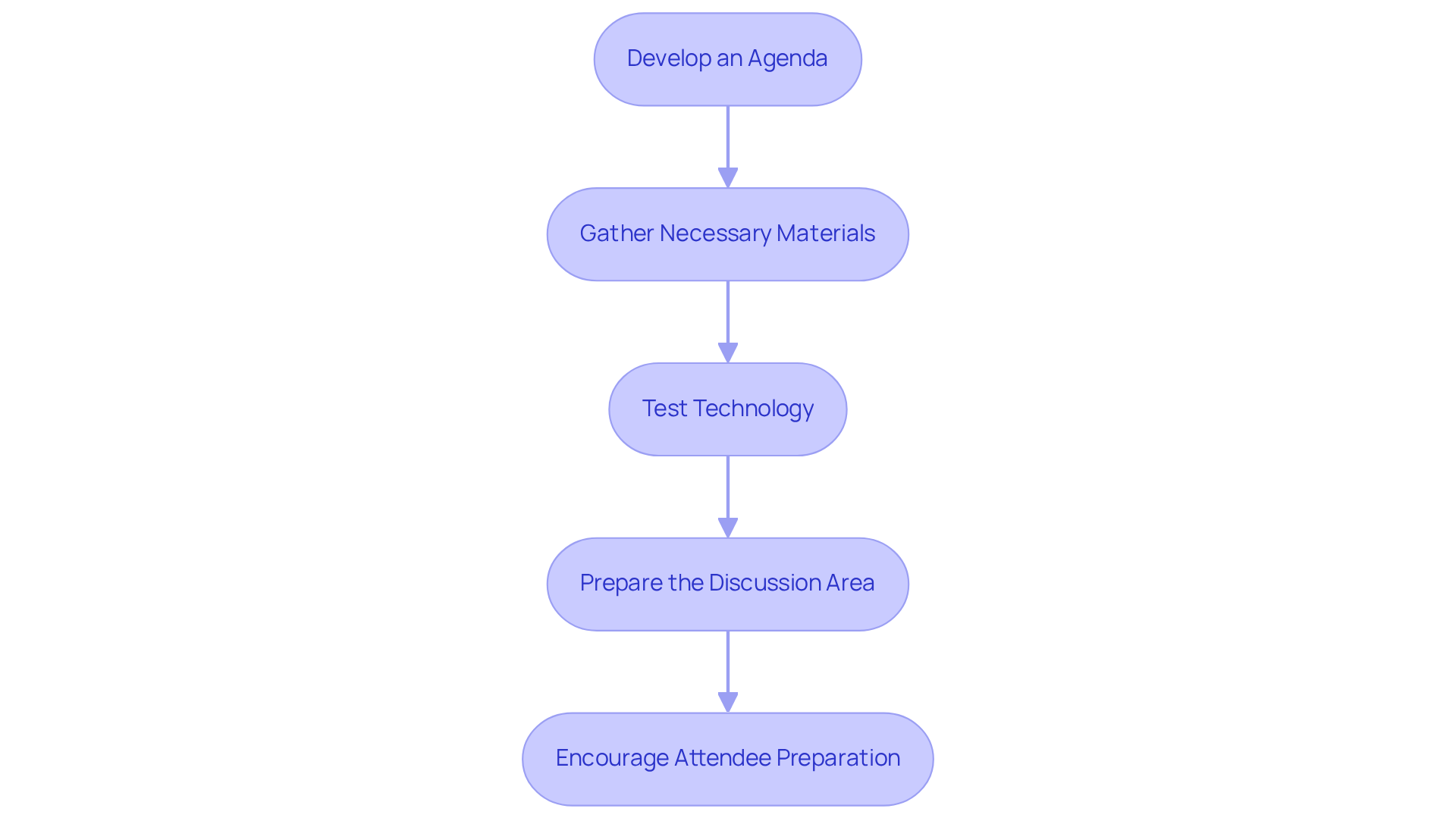
Send Reminders and Follow-Up
-
Send Session Reminders: To combat communication inefficiencies, it is crucial to send a reminder email to all attendees a day or two before the gathering. This email should clearly outline the gathering time, location, agenda, and any materials that participants should review to ensure everyone is prepared.
-
Use Automated Tools: Embracing technology can significantly streamline operations. Consider utilizing scheduling tools that automate reminders, thereby minimizing manual effort and enhancing efficiency in your communication processes.
-
Follow-Up After the Meeting: To reinforce accountability and clarity, send a follow-up email summarizing the key points discussed, decisions made, and action items assigned, along with their respective deadlines. This practice not only keeps everyone informed but also strengthens commitment to the agreed-upon actions.
-
Encourage Feedback: Gathering input from participants regarding the meeting is essential for continuous improvement. Requesting feedback allows you to identify areas for enhancement in future sessions, fostering a culture of open communication and collaboration.
-
Track Action Items: Monitoring the progress of action items discussed in the meeting is vital for ensuring accountability. Regular follow-ups with responsible parties will help maintain momentum and ensure that tasks are completed on time.
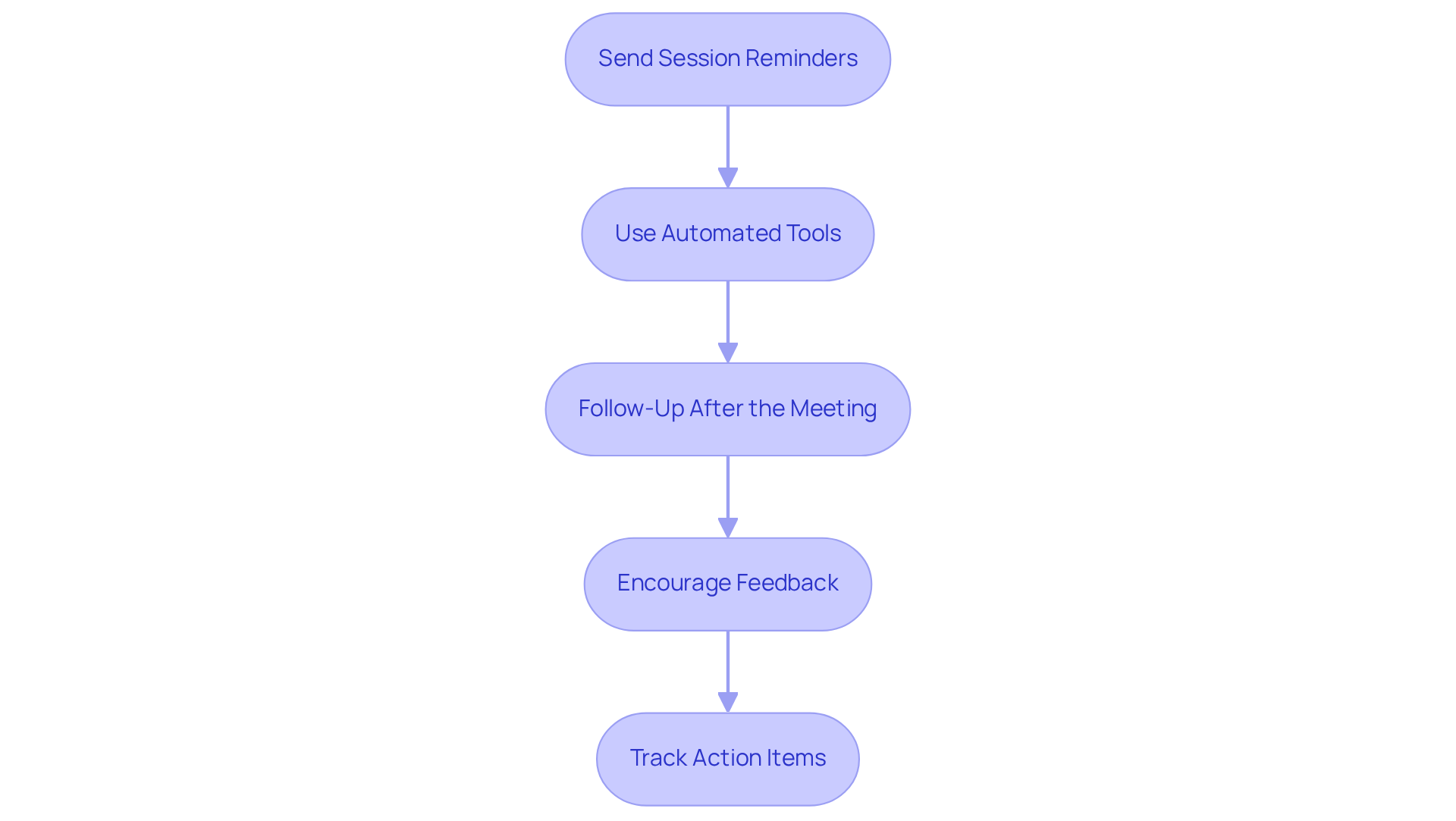
Conclusion
Effective meeting coordination is essential for enhancing operational efficiency within organizations. By implementing strategic practices—such as identifying participant availability, considering time zones, and establishing clear goals—meetings can evolve from unproductive gatherings into powerful tools for collaboration and decision-making.
This article outlines five critical steps for coordinating meetings effectively:
- Setting an appropriate meeting time
- Determining the meeting location
- Creating clear goals
- Planning and preparing for the meeting
- Sending reminders and follow-ups
Each step emphasizes the importance of preparation, communication, and participant engagement, collectively contributing to more productive meetings. By utilizing scheduling tools, defining objectives, and ensuring comfortable environments, organizations can significantly reduce the time and resources wasted on ineffective meetings.
In a world where time is a valuable commodity, prioritizing operational efficiency in meetings is paramount. Embracing these best practices not only fosters a culture of accountability and engagement but also enhances overall productivity. The call to action is clear: organizations should commit to refining their meeting coordination processes, leveraging technology, and continuously seeking feedback to ensure that every meeting serves its intended purpose.
Frequently Asked Questions
How can I identify participants’ availability for a meeting?
You can leverage scheduling tools such as Doodle or Calendly to efficiently gather participants’ availability. These platforms help streamline the process of identifying shared availability, ensuring all attendees can participate without conflicts.
Why is it important to consider time zones when scheduling a meeting?
Considering time zones is essential for teams spread across various locations, as nearly one-third of meetings involve multiple time zones. Utilizing world clock tools can help pinpoint a suitable gathering time that accommodates all participants, enhancing participation rates.
When should I schedule meetings to avoid decreased engagement?
It is advisable to schedule discussions outside of peak work hours, such as early mornings or late afternoons. Meetings scheduled during busy periods often result in decreased engagement, as employees may feel rushed.
What is the recommended duration for meetings?
Research suggests that shorter gatherings, typically lasting between 30 to 45 minutes, are more productive than longer sessions. Establishing a reasonable timeframe respects participants’ time and enhances overall session productivity.
How should I confirm the meeting time with participants?
Once the meeting time is confirmed, promptly send a calendar invite to all participants. This confirmation ensures alignment on the gathering details and minimizes the risk of last-minute scheduling conflicts.
What factors should I consider when determining the meeting location?
You should decide whether the meeting will be in-person, virtual, or hybrid, as this influences logistics. For in-person meetings, select a venue that is easily accessible, has adequate facilities, and provides a comfortable environment.
What amenities should the meeting venue have?
The selected venue should be equipped with essential amenities, including comfortable seating, audio-visual equipment, and reliable internet access. It’s important to check these facilities beforehand to prevent technical difficulties during the meeting.
How can I ensure smooth attendance at the meeting?
Clearly communicate the location information in the calendar invite, including any necessary access instructions or links for virtual sessions. This transparency helps facilitate smooth attendance and participation.
